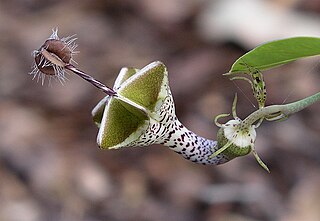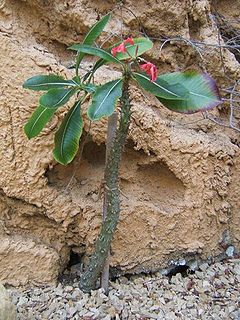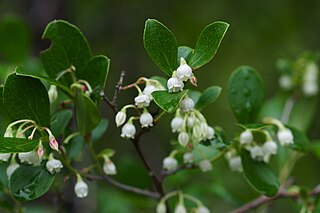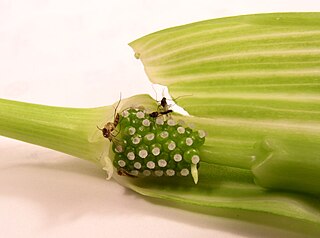
Ceropegia is a genus of plants within the family Apocynaceae, native to Africa, southern Asia, and Australia. It was named by Carl Linnaeus, who first described this genus in volume 1 of his Species plantarum, which appeared in 1753. Linnaeus thought that the flowers looked like a fountain of wax. From this the scientific name was derived: kērós meaning wax and pēgḗ meaning fountain. They have many common names including lantern flower, parasol flower, parachute flower, bushman’s pipe, string of hearts, snake creeper, wine-glass vine, rosary vine, and necklace vine.

Salvia spathacea, the California hummingbird sage, hummingbird sage, or pitcher sage, is a species of flowering plant in the family Lamiaceae, native to southern and central California growing from sea level to 610 m (2,001 ft). This fruity scented sage blooms in March to May with typically dark rose-lilac colored flowers. It is cultivated in gardens for its attractive flowering spikes and pleasant scent.

Pachypodium ambongense is a species of plant in the family Apocynaceae. It was first published as a species of the genus Pachypodium in 1924 by the botanist Henri Louis Poisson.

Pachypodium baronii, the Madagascar palm or bontaka, is a flowering plant in the family Apocynaceae. It has the habit of a robust shrub with a spherical or bottle-shaped trunk. It has several cylindrical branches at the top.
Pachypodium bicolor is a species of plant in the family Apocynaceae.

Pachypodium brevicaule is a species of plant that belongs to the family Apocynaceae.
Echinodorus tunicatus is a species of aquatic plants in the family Alismataceae.

Ceropegia woodii is a flowering plant in the genus Ceropegia (Apocynaceae), native to South Africa, Swaziland, and Zimbabwe. It is sometimes treated as a subspecies of the related Ceropegia linearis, as C. linearis subsp. woodii. Common names include chain of hearts, collar of hearts, string of hearts, rosary vine, hearts-on-a-string, and sweetheart vine.

Vaccinium arboreum is a species of Vaccinium native to the southeastern and south-central United States, from southern Virginia west to southeastern Nebraska, south to Florida and eastern Texas, and north to Illinois.

Duvalia is a succulent plant genus in the subfamily Asclepiadoideae, in the family Apocynaceae (dogbane).

Osmanthus heterophyllus, variously known as holly osmanthus, holly olive, and false holly, is a species of flowering plant in the olive family Oleaceae, native to eastern Asia in central and southern Japan and Taiwan.

Noronhia emarginata is a species of Noronhia native to Madagascar, now naturalized on Mauritius, Réunion and Bermuda.

Crinum asiaticum, commonly known as poison bulb, giant crinum lily, grand crinum lily, spider lily, is a plant species widely planted in many warmer regions as an ornamental plant. It is a bulb-forming perennial producing an umbel of large, showy flowers that are prized by gardeners. All parts of the plant are, however, poisonous if ingested. Some reports indicate exposure to the sap may cause skin irritation.

Brunfelsia pauciflora is a species of flowering plant in the family Solanaceae, the nightshades. It is endemic to Brazil, and it is grown in cultivation. A shrubby perennial plant grown in gardens, its common names include yesterday-today-and-tomorrow, morning-noon-and-night, Kiss Me Quick, and Brazil raintree.
Coffea charrieriana, also known as Charrier coffee, is a species of flowering plant from the Coffea genus. It is a caffeine-free coffee plant endemic to Cameroon in Central Africa. It was found to be the only caffeine-free plant in Central Africa, and the second to be found in Africa. The first caffeine-free species was previously discovered in Kenya, named C. pseudozanguebariae The International Institute for Species Exploration at Arizona State University and a committee of taxonomists and scientists voted the C. charrieriana as one of the top 10 species described in 2008.

Edithcolea is a monotypic genus with a single species Edithcolea grandis. Once classified in the family Asclepiadaceae, it is now in the subfamily Asclepiadoideae of the dogbane family Apocynaceae. It is native to Africa and to the Arabian Peninsula.

Pollination traps or trap-flowers are plant flower structures that aid the trapping of insects, mainly flies, so as to enhance their effectiveness in pollination. The structures of pollination traps can include deep tubular corollas with downward pointing hairs, slippery surfaces, adhesive liquid, attractants, flower closing and other mechanisms.

Ceropegia candelabrum is a plant species from the subfamily Asclepiadoideae. The specific epithet is derived from the candelabra-like appearance of the inflorescences.

Petrophile striata is a species of flowering plant in the family Proteaceae and is endemic to southwestern Western Australia. It is a shrub with pinnate or bipinnate, striated, sharply-pointed leaves, and oval heads of silky-hairy yellow, creamy-yellow or cream-coloured flowers.

Duvalia elegans is a small succulent plant species, in the family Apocynaceae. It is the type species of the genus Duvalia, and it is endemic to the Western Cape Province, South Africa.
















